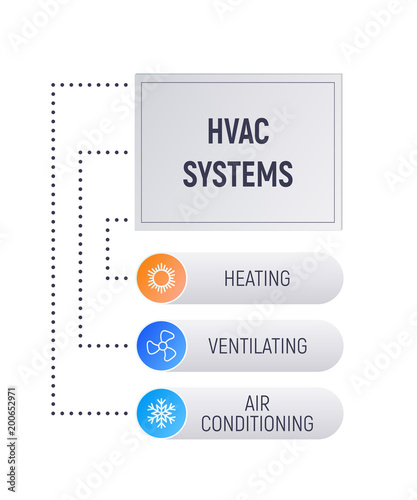The most effective heat pumps can conserve you significant amounts of cash on power costs. They can also help reduce greenhouse gas discharges, especially if you utilize electrical energy instead of nonrenewable fuel sources like propane and home heating oil or electric-resistance heaters.
Heatpump function very much the same as air conditioning unit do. This makes them a practical option to typical electrical home heating systems.
Exactly how They Function
Heat pumps cool homes in the summer season and, with a little aid from power or natural gas, they supply several of your home's heating in the winter months. They're an excellent choice for people who intend to minimize their use of fossil fuels however aren't prepared to change their existing heater and a/c system.
They count on the physical fact that even in air that seems too cold, there's still energy existing: cozy air is constantly relocating, and it wants to relocate right into cooler, lower-pressure environments like your home.
A lot of power STAR accredited heatpump run at near their heating or cooling capability throughout most of the year, lessening on/off biking and conserving power. For the best efficiency, concentrate on systems with a high SEER and HSPF ranking.
The Compressor
The heart of the heatpump is the compressor, which is likewise called an air compressor. This mechanical streaming gadget makes use of prospective energy from power production to boost the stress of a gas by lowering its volume. It is different from a pump because it just works with gases and can not deal with liquids, as pumps do.
Atmospheric air goes into the compressor with an inlet valve. It travels around vane-mounted arms with self-adjusting size that separate the inside of the compressor, developing numerous cavities of varying dimension. The blades's spin forces these tooth cavities to move in and out of stage with each other, pressing the air.
The compressor pulls in the low-temperature, high-pressure cooling agent vapor from the evaporator and compresses it into the warm, pressurized state of a gas. This procedure is duplicated as needed to supply heating or air conditioning as required. The compressor likewise contains a desuperheater coil that reuses the waste warm and adds superheat to the cooling agent, transforming it from its liquid to vapor state.
The Evaporator
The evaporator in heat pumps does the same point as it performs in fridges and a/c unit, changing fluid refrigerant right into an aeriform vapor that removes heat from the space. Heatpump systems would not work without this essential tool.
This part of the system is located inside your home or structure in an interior air trainer, which can be either a ducted or ductless unit. Click That Link has an evaporator coil and the compressor that compresses the low-pressure vapor from the evaporator to high pressure gas.
https://kameronqtrnj.blogscribble.com/29378460/the-definitive-guide-to-selecting-the-right-size-heatpump-for-your-home take in ambient heat from the air, and after that make use of power to move that heat to a home or business in home heating setting. That makes them a lot a lot more power efficient than electrical heating units or heaters, and due to the fact that they're making use of tidy electricity from the grid (and not shedding gas), they likewise create much less emissions. That's why heat pumps are such wonderful environmental selections. (Not to mention a huge reason that they're becoming so preferred.).
The Thermostat.
Heat pumps are fantastic alternatives for homes in chilly environments, and you can utilize them in combination with standard duct-based systems or even go ductless. They're an excellent alternate to nonrenewable fuel source heater or traditional electrical heating systems, and they're a lot more lasting than oil, gas or nuclear heating and cooling tools.
Your thermostat is the most crucial component of your heat pump system, and it functions extremely in a different way than a conventional thermostat. All mechanical thermostats (all non-electronic ones) work by using materials that change size with enhancing temperature level, like curled bimetallic strips or the increasing wax in an automobile radiator shutoff.
These strips include 2 different types of metal, and they're bolted with each other to create a bridge that completes an electric circuit connected to your a/c system. As the strip gets warmer, one side of the bridge expands faster than the other, which causes it to flex and indicate that the heater is required. When visit the following page is in home heating setting, the turning around shutoff reverses the circulation of cooling agent, to ensure that the outside coil now operates as an evaporator and the indoor cyndrical tube comes to be a condenser.
